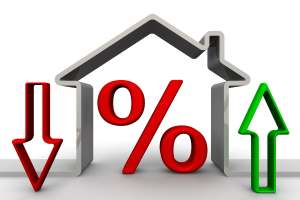
Second Mortgage Essentials Explained
What Is a Second Mortgage?

If you have heard of home equity loans then you have heard of second mortgages as they are one and the same. A second mortgage or home equity loan come to exist when a homeowner with an existing first mortgage decides to take out a new mortgage based on the existing equity in his or her home. This new loan is separate from the first mortgage and thus it is referred to as a second mortgage. Therefore, the homeowner now has two mortgages registered on the property.
For instance, if a home owner purchased a home for $200,000 few years ago with an existing mortgage balance of $160,000 and the home has now appreciated to $250,000, then the homeowner has $90,000 ($250,000 – $160,000) worth of equity in his/her home. The homeowner could use this equity to borrow additional cash in the form of home equity loan. This new loan is really a second mortgage as it is taken out on top of the existing 1st mortgage.
How Does a Second Mortgage Differ From a First Mortgage?
There are some critical differences between the first mortgage and additional mortgages that you must be aware of. One major difference is higher fees and interest rates associated with second mortgages. The other is the length of these loans as discussed more in details below
Why Do Second Mortgages Have Higher Fees and Interest Rates?
Since a second mortgage is registered second on the title it has a lower priority than the first mortgage. In Ontario this means that in case of default and power of sale, the proceeds of the sale (once other fees such as tax, utility bills, legal, etc. has been deducted) will be applied towards paying out the first lender and whatever is left over can be used to pay out the second lender. Often times there may not be sufficient funds to fully pay off the second lender. Thus a second mortgage carries more risk for the lender than a first mortgage. The risk posed to the lender is in a way passed on to the homeowner in terms of higher interest rate and fees associated with taking out a second mortgage.
What Are The Term and Length of Second Mortgages?
Another important difference is the term or length of the mortgage. Very long terms such as ten, twenty or even thirty years are not unheard of when speaking of first mortgages. However, when it comes to second mortgages the terms are generally much shorter. Many second mortgage lenders have terms as short as one or two years. Although some lenders offer to renew their loan, maintaining these loans for a longer period is not an attractive option due to renewal fees and higher interest rates. This means the homeowner must determine in advance of applying for a second mortgage, what would be the exit strategy to pay off the entire loan when the term comes up.
How Much Can Be Borrowed?

The answer depends on who is providing the loan. The second mortgage lenders can generally be categorized into two groups, the institutional lenders and private lenders. The institutional lenders comprise the A lenders such as the banks and the B lenders such as trust companies, insurance firms and other institutional lenders. The private lenders can be wealthy individual investors or private firms and companies.
Institutional lenders, governed by strict federal lending regulations, are restricted to a maximum of 80% LTV for refinances and second mortgages; whereas, private lenders have the freedom to determine how much risk they are willing to endure. Thus, many private lenders are willing to lend well beyond the 80% LTV mark. Private lenders will consider both the individual and the property to determine how much can be lent out. For properties located in very marketable areas, some private lenders in a bull real estate market are willing to go as high as 95% LTV. In short the maximum amount a homeowner can borrow depends on how much equity exists in the property.
Benefits of Second mortgages
Some major benefits of taking out a second mortgage are
- The homeowner does not have to make any changes to first mortgage. This is especially attractive if the first mortgage has a low interest rate and the homeowner’s credit rating has taken a dive since then.
- Avoid penalties associated with breaking the terms of the first mortgage before its due term
- The borrower needs the funds for a short period of time and thus there is no need to refinance the first mortgage.
- The loan amount depends upon existing equity not on income, credit or debt ratio of the homeowner. This allows a homeowner with low income and poor credit to take out a large loan if the home has considerably appreciated in value over the years.
- The last benefit is that these mortgages can be arranged pretty quickly and can be beneficial for emergency situation when a borrower needs access to funds quickly.
What Are Drawbacks of Second Mortgages?
The major drawbacks of second mortgages are first the higher fees and interest rates associated with these types of loans as well as the short lending period. As already stated, second mortgages generally have shorter period than the first mortgages and renewing the loan may include paying additional fees. Thus, the homeowner needs to plan how the loan can be repaid in full when the term comes to an end.
What Are Second Mortgages Commonly Used For?
Although each individual has his or her reason for taking out a second mortgage, the more common use of second mortgages are:
- Debt consolidation: many homeowners take out a second mortgage to pay out all interest debts such as credit card and store card debts to lower their monthly payments
- Pay out emergency expenses, judgments or collections: since second mortgages can be arranged fairly quickly, they are a viable option for paying emergency expenses
- Home Renovation: Home improvement is another reason homeowners take out a home equity loan to spruce up their home
- Children education: assisting children with school tuition is yet another reason for taking out such loans
- Investment: some homeowners choose to take out a second mortgage to use as a down payment toward purchasing a new property or other investments
Is There an Income or Credit Qualification Requirement for Second Mortgages?
The answer depends on who is issuing the loan. The institutional lenders such as the banks and trust companies have minimum credit and GDS/TDS requirements whereas some private lenders have much more relaxed policies that concentrate more on the property and the equity. Thus, there are private lenders that issue second mortgages even if the homeowner has horrible credit, no income, past bankruptcies or even going through power of sale. However as it is explained in the following section, it is important to note that credit and income does influence the lending criteria of almost all lenders when it comes to LTV and interest rates.
What is The Impact of Poor Credit and Income on Second Mortgages?

Even though credit and income may not play as important of a role as the equity in the private lending world, most private lenders will cut back on the LTV, hike up the interest rate and possibly increase the fees if the borrower is suffering from very poor credit and income. For instance under favorable conditions a private lender may choose to lend out up to 95% LTV for a certain property and keep the fees and interest rate at an attractive rate. However for the same property, if the borrower has very bad credit and no income, the lenders risk has increased. Thus, to compensate for the additional risk, the lender may lower the loan amount to 85% LTV and increase the fees as well as interest rate.
What Factors Used in Determining the Interest Rate?
As indicated earlier second mortgages have a higher risk than the first mortgage and thus the interest rate for these types of loans is higher. It is difficult to say with certainty what the starting interest rate is as the interest rates keep changing from time to time. Furthermore each private lender has a unique investment strategy and sets interest rates that meet his or her unique investment objective.
Typically lenders look at the following factors in setting the interest rate: property, credit worthiness of the borrower and LTV. Lenders favor marketable properties with lower LTV so that in case of a default, the property could easily be sold and the lender can recover his/her investment. Poor credit, low income and/or higher LTV will result in higher interest rates and fees.
However, it would be misleading to look at interest rates alone when comparing lenders as interest rate is only one factor in the total cost of borrowing as explained in the next section.
Interest Rates Alone May Be Misleading! Look at the Full Picture

Many second mortgage lenders lure in borrowers by showing low interest rates on the mortgage. This has been perhaps the oldest and most effective weapon used by both the institutional lenders and private lenders alike to persuade borrowers to buy into their service. Interest rate is only one piece of the puzzle. To find out what the true cost really is, borrowers must look at the total cost of borrowing not just the interest rate. For instance let’s review the following scenarios:
Scenario 1 – Bob obtains a $20,000 loan from private lender Smith for a one year term at 15% interest rate and pays $600 fees.
Scenario 2 – Bill obtains a $20,000 loan from private lender Jones for a one year term at 10% interest rate and pays $1,600 fees.
At first glance the two scenarios may appear very different but a closer look will determine that both Bob and Bill will pay a total of $3600 interest and fee at the end of the one year term. In the above scenario, lender B appears to be charging 5% lower interest rate than lender A but in fact lender B takes the 5% interest rate and adds it to the fee (0.05 * $20,000 = 1000).
The total cost associated with borrowing may comprise of appraisal, lender/broker fees, interest rate and legal fees. To find out what the cost of borrowing really is, the burrower should consider all these expense in their calculations. Mortgage agents and brokers in Ontario are required by law to fully disclose the total cost of borrowing to each client when arranging a second mortgage
Where and How to Apply For a Second Mortgage?
Finding a great second mortgage especially if you need private funds is no easy task as there are myriads of private individual lenders and organization each with its own private lending policy, specialization, geographic lending area, fees, interest rate and maximum lending rule. To find a suitable loan, it is best to employ the services of a qualified mortgage agent that specializes in arranging private loans and second mortgages. Applying for a second mortgage is easy from then on as the borrower’s application is forwarded to appropriate lenders with suitable rate and term that meets the borrower’s requirement.



